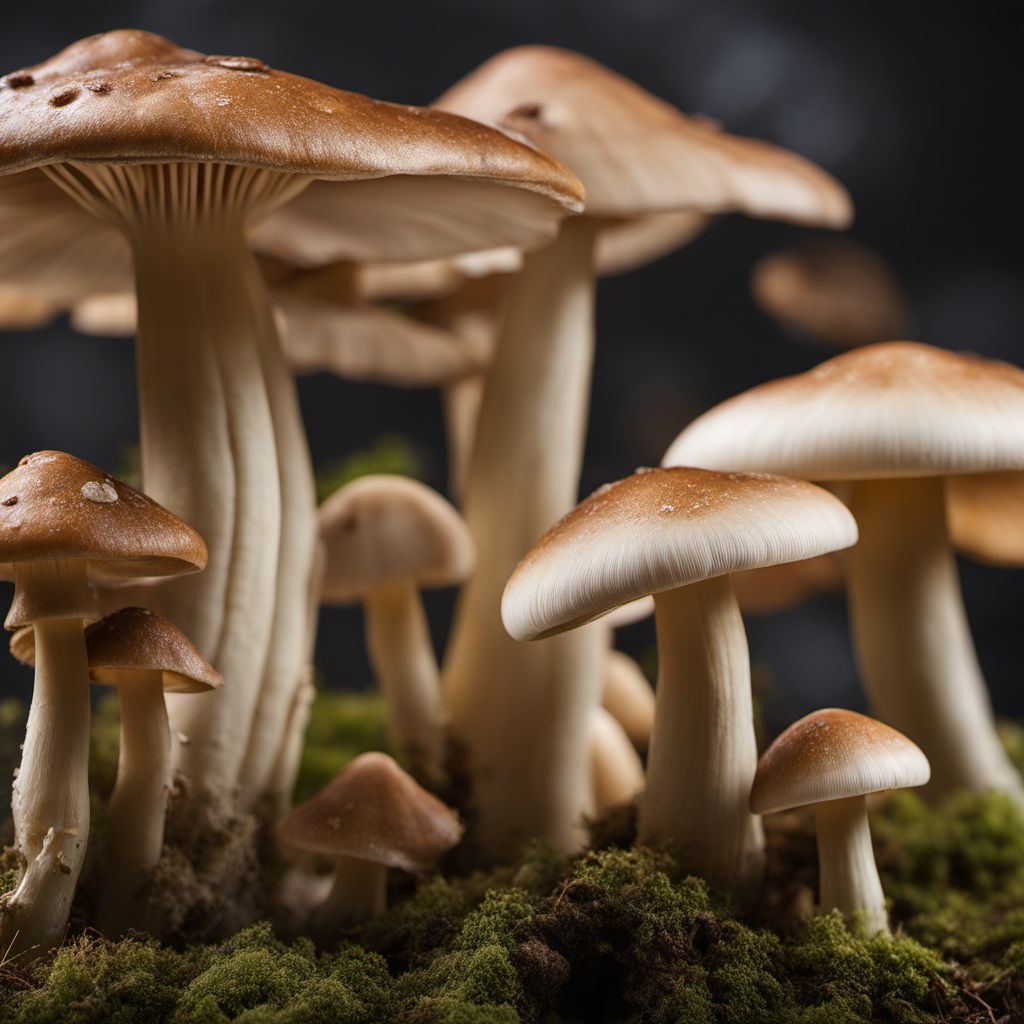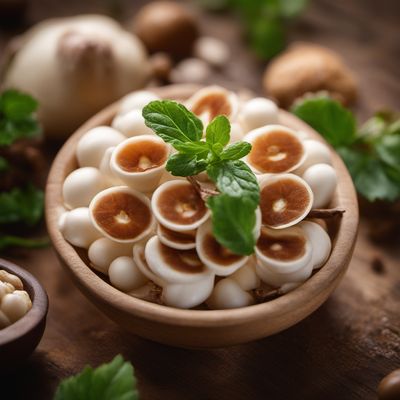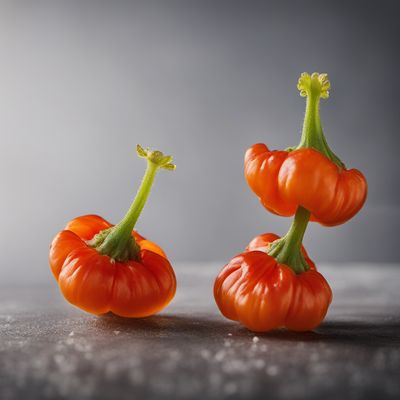
Ingredient
Saint George's mushrooms
The Forest Delicacy
Saint George's mushrooms are characterized by their large, creamy-white caps and thick, firm stems. They have a mild and slightly nutty flavor with a meaty texture. These mushrooms are versatile and can be used in a variety of dishes, including soups, stews, risottos, and sautés.
Origins and history
Saint George's mushrooms have a rich history that dates back centuries. They are named after Saint George, the patron saint of England, as they typically appear around the time of his feast day on April 23rd. These mushrooms are native to Europe and are particularly abundant in the United Kingdom, France, and Italy. They have been enjoyed as a culinary delicacy for generations and are often featured in traditional European recipes.
Nutritional information
Saint George's mushrooms are low in calories and fat, making them a healthy addition to meals. They are also a good source of protein, fiber, vitamins, and minerals. Additionally, they contain antioxidants and other bioactive compounds that may have potential health benefits.
Allergens
There are no known allergens associated with Saint George's mushrooms. However, it is always advisable to exercise caution when consuming wild mushrooms and to properly identify them to avoid any potential risks or adverse reactions.
How to select
When selecting Saint George's mushrooms, look for specimens that are firm and have a fresh, clean appearance. Avoid mushrooms that are slimy, discolored, or have a strong odor. It is recommended to purchase mushrooms from reputable sources or to forage for them with the guidance of an experienced forager.
Storage recommendations
To maintain the freshness and quality of Saint George's mushrooms, store them in a paper bag or a breathable container in the refrigerator. Avoid washing the mushrooms until ready to use, as excess moisture can cause them to deteriorate quickly. Properly stored mushrooms can last for up to a week.
How to produce
Saint George's mushrooms can be challenging to cultivate, as they have specific growth requirements. They typically grow in grassy areas, meadows, or woodlands. However, due to their delicate nature and specific symbiotic relationships with certain trees, they are not commonly cultivated on a large scale. Foraging for wild Saint George's mushrooms is the most common way to obtain them.
Preparation tips
Before using Saint George's mushrooms, gently clean them with a soft brush or a damp cloth to remove any dirt or debris. Trim the stems if necessary and slice or chop the mushrooms according to the recipe's requirements. These mushrooms can be sautéed, roasted, grilled, or used in soups, stews, risottos, and pasta dishes. They pair well with herbs, garlic, butter, cream, and various vegetables.
Culinary uses
Saint George's mushrooms are highly regarded in European cuisine and are used in a variety of dishes. They can be sautéed with garlic and herbs as a side dish, added to soups and stews for extra flavor and texture, or incorporated into risottos and pasta dishes. These mushrooms are often featured in traditional European recipes and are prized for their delicate flavor and meaty texture.
Availability
Saint George's mushrooms are commonly found in Europe, particularly in the United Kingdom, France, and Italy. They are abundant in grassy areas, meadows, and woodlands during the spring season. These mushrooms can also be found in specialty markets or gourmet stores in other parts of the world.
More ingredients from this category

Other wild fungi
Exploring the Hidden World of Wild Mushrooms

Scotch bonnet mushrooms
Fiery Delights: Unleashing the Flavors of Scotch Bonnet Mushrooms

Gypsy mushroom
The Enigmatic Delicacy: Gypsy Mushroom

Morels
The Earthy Delicacy

Chanterelles
Golden Delicacy

Ceps
The King of Mushrooms

Saffron milk cap
The Golden Delicacy: Unveiling the Secrets of Saffron Milk Cap

Honey mushroom
The Golden Fungus

Horns of plenty
Exploring the Delights of Horns of Plenty

Truffles
The Earth's Edible Gems

Hedgehog mushrooms
Exquisite Earthiness: Hedgehog Mushrooms